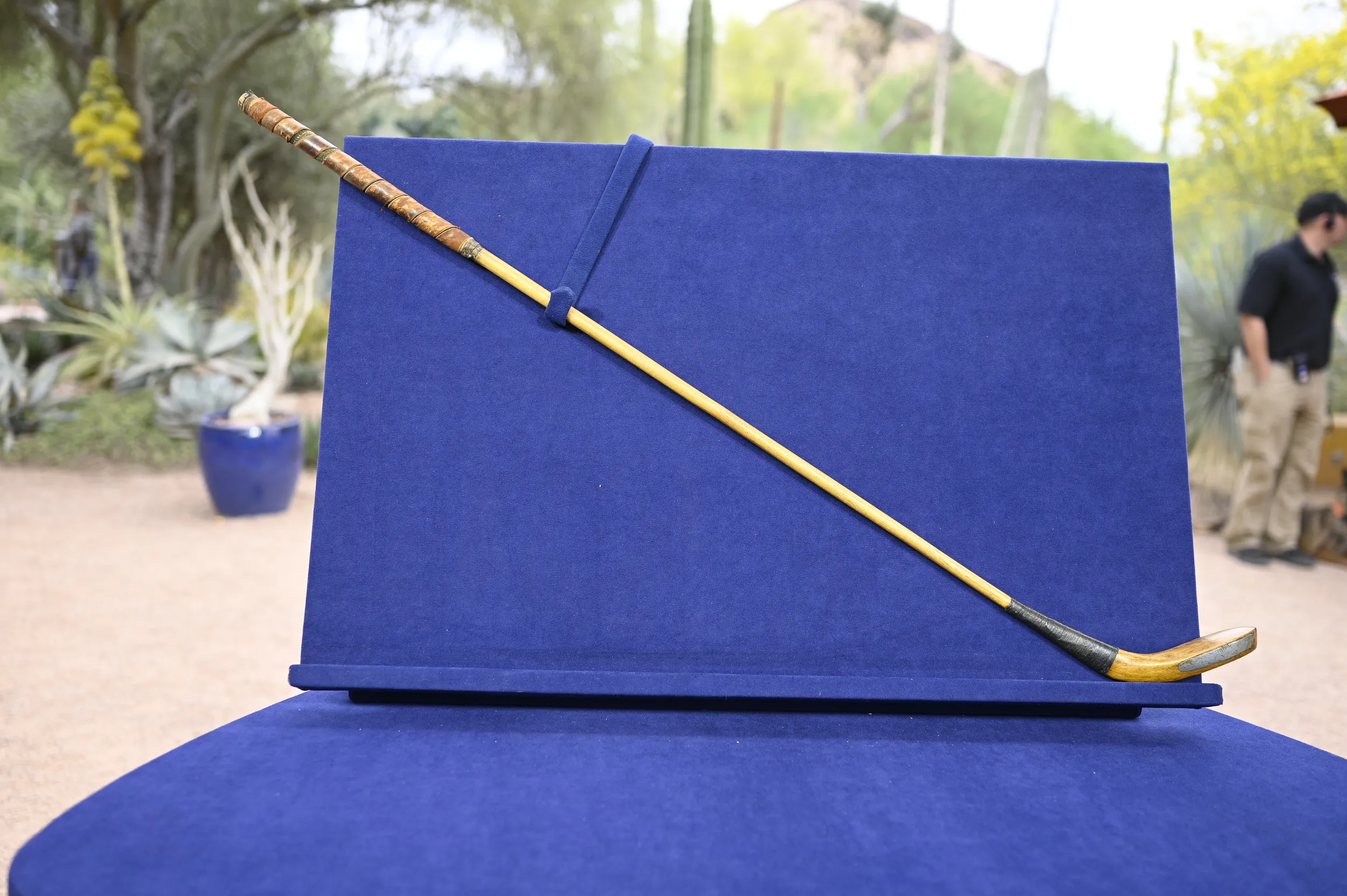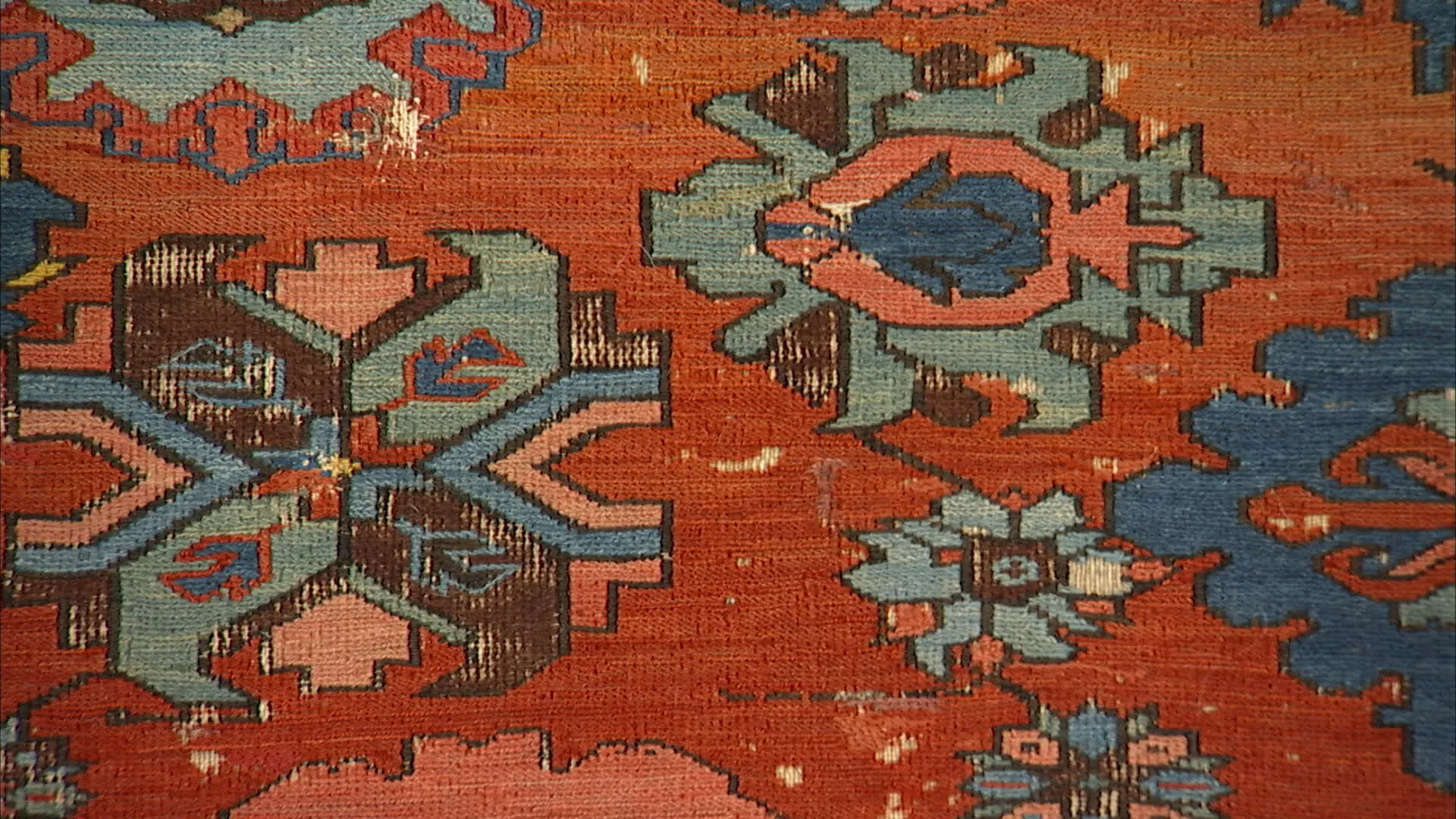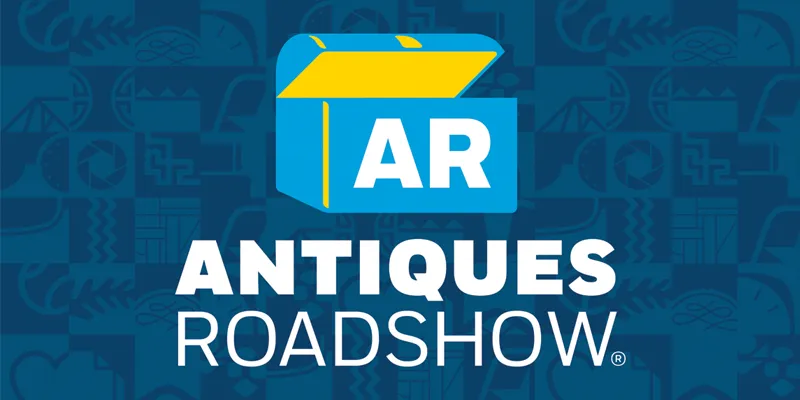APPRAISER: So, Jane, Jane Crafter. When you came in line, I recognized you immediately. So for those at home who are not golf junkies like myself, please tell everyone a little bit about your background and career in golf.
GUEST: Well, I came over from Australia in 1981, the daughter of a golf professional. I had a good amateur career in Australia, and I came over to play on the LPGA, and I played from 1981 till 2004, lucky enough to win one official event on the LPGA down in Florida. And then also won three times in Australia. Having gone into TV commentary, I've been around golf all my life. But I've always been a collector. I love golf antiques, and this particular one is one of my favorites in my collection. I invested, I think, no more than $300 in this club.
APPRAISER: But never used in a tournament.
GUEST: Oh, no, never, never.
APPRAISER: (laughing) Okay. So golf has been played for many centuries, and Scotland's considered to be its home. In the 1800s, clubs started be made by well-known club-makers, and they were stamped, like your club is stamped.
GUEST: Mm-hmm.
APPRAISER: And the major club-makers of the time were celebrated for their skills. The major era of long-nose clubs was in the 1800s, and by the 1900s, though, with the advent as golf for the leisure class, many more people wanted to play. The demand became so much higher. So you had all these golf manufacturers, both in Scotland and the United States, that made hundreds of millions hickory-shafting clubs. So let's talk about your golf club in value. First of all, long-nose play clubs, these were drivers or woods today. That's what they'd be considered. So I'm looking at this club, when you brought it in, I wasn't sure about it. Now, I've-- I've sold a lot of golf clubs, I've appraised a lot of golf clubs, and sometimes, things are just shades of gray. So I'm going to use kind of a... A golf term that you'll appreciate. Stymie.
GUEST: Right.
APPRAISER: I'm a little stymied right now. 'Cause you see how it's stamped "Stewart" here?
GUEST: Yes.
APPRAISER: There is no major club-maker named Stewart.
GUEST: Right.
APPRAISER: There's Tom Stewart out of Scotland, but he was known for cleeks, or what are known as irons today.
GUEST: Right.
APPRAISER: so that, to me, was confusing right off the top.
GUEST: Mm-hmm.
APPRAISER: But it's possible that this stamping was for the owner or the player, not by the actual maker.
GUEST: Okay, right.
APPRAISER: I talked to three different specialists and I sent them photos and, about this club, because, look, there's just something about it, I'm not quite sure. So I got one opinion from one longtime golf auctioneer who felt it was from the 1880s.
GUEST: Right.
APPRAISER: So then I went to specialist number two, and he felt this head did not have the workmanship or the craftsmanship of heads that were made by the major club-makers at that time, and he thought that possibly this may have been a later head that was married to the shaft.
GUEST: Ah.
APPRAISER: I have a third that did tell me that Tom Stewart, for a brief period in the 1890s, made transitional golf clubs.
GUEST: Huh.
APPRAISER: But transitional heads tend to be much squatter, like the clubs of today.
GUEST: Right.
APPRAISER: So what we're gonna do is try to do a little bit more research on this.
GUEST: Oh, good.
APPRAISER: We think an auction estimate is between $400 to $600.
GUEST: Mm-hmm.
APPRAISER: And we think you should insure it for about $1,500.
GUEST: Mm-hmm.
APPRAISER: So you're in good shape.
GUEST: Right.
APPRAISER: It's a beautiful work of art.
GUEST: It is beautiful, and I appreciate your time, and thanks for having me.












